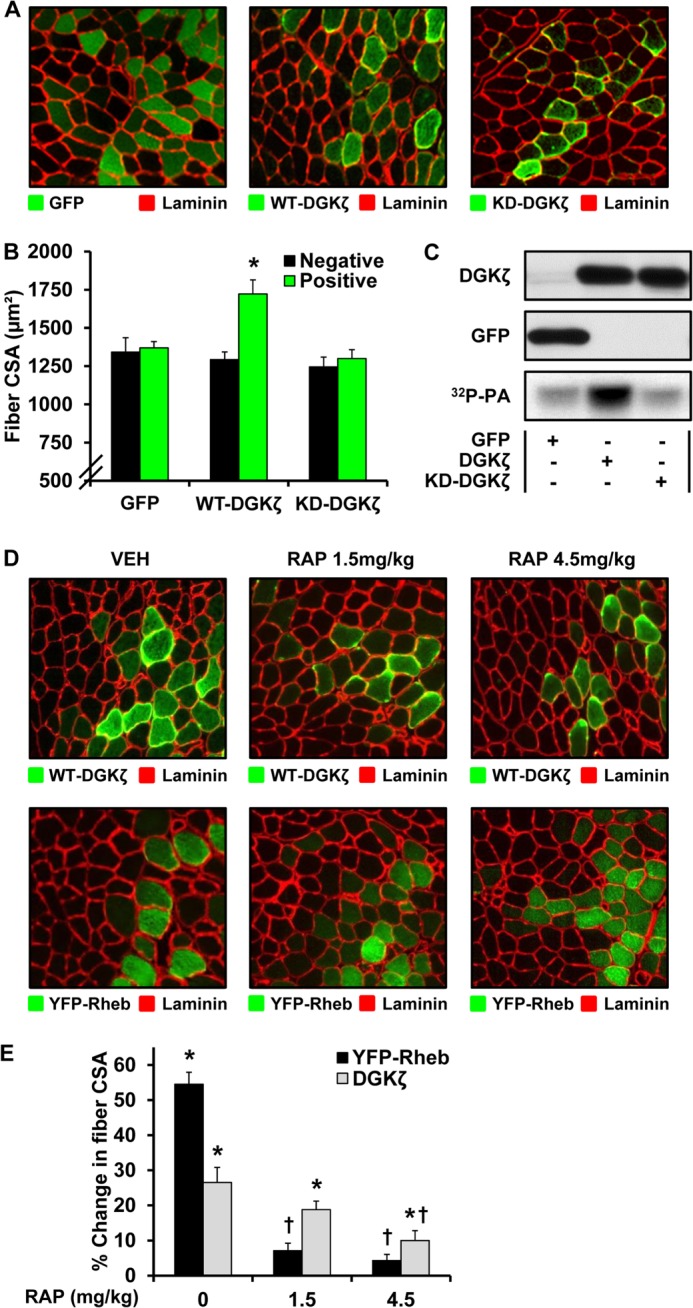FIGURE 7.

Overexpression of DGKζ induces hypertrophy through a kinase-dependent and rapamycin-sensitive mechanism. A–C, mouse TA muscles were transfected with plasmid DNA encoding GFP, HA-WT-DGKζ, or HA-KD-DGKζ. A, the muscles were collected at 7 days post transfection, and cross-sections from the mid-belly of the muscles were subjected to immunohistochemistry for GFP and laminin or for HA and laminin. B, CSA of the transfected fibers (Positive) and non-transfected fibers (Negative) within each of the GFP-, HA-WT-DGKζ-, and HA-KD-DGKζ-transfected muscles. C, muscles were collected at 3 days post transfection, and whole lysates were subjected to a DGK activity assay (32P-PA) or Western blot analysis for the indicated proteins. D and E, mouse TA muscles were transfected with plasmid DNA encoding HA-WT-DGKζ or YFP-Rheb. Immediately after transfection the mice were subjected to a regime of daily 1.5 or 4.5 mg/kg rapamycin (RAP) or vehicle (RAP 0, DMSO) injections. D, the muscles were collected at 7 days post transfection, and cross-sections from the mid-belly of the muscles were subjected to immunohistochemistry for HA and laminin or for YFP and laminin. E, the CSA of the transfected fibers and non-transfected fibers within each of the HA-WT-DGKζ- and YFP-Rheb-transfected muscles was determined, and then the percent difference between the averaged CSA of the transfected fibers and non-transfected fibers of each muscle was calculated. All values are presented as the mean ± S.E. (n = 3–8 muscles per group, 35–120 fibers per muscle). *, significantly different from the drug- and plasmid-matched non-transfected fibers. †, significantly different from the plasmid-matched vehicle group; p ≤ 0.05.
